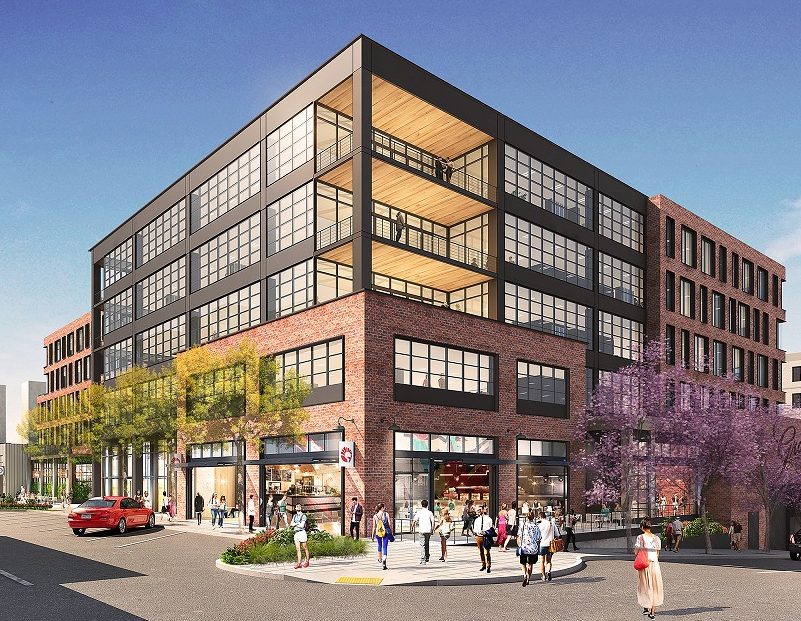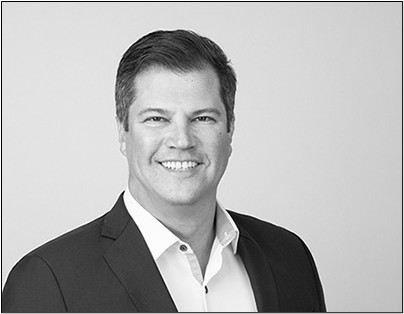Electrification Gains Traction—Slowly
Going all-electric reduces carbon footprints, but increased costs remain a hurdle.
By Gail Kalinoski

Kilroy Realty Corp. is developing 2100 Kettner, a mixed-use property in San Diego and an unusual example of an all-electric project. (Image courtesy of Kilroy Realty)
As the push for electrification of commercial buildings slowly picks up steam, forward-thinking owners are leading the way. Sara Neff, senior vice president of sustainability at Kilroy Realty Corp., reports that the Los Angeles-based REIT “is dipping our toe in the water” and developing an all-electric mixed-use property in San Diego.
Kilroy’s 2100 Kettner, a 174,380-square-foot, Class A office project aiming for LEED Platinum certification, will feature an all-electric core and shell and a Variable Refrigerant Volume HVAC system, as well as a solar array to reduce carbon emissions.
Neff noted the project, scheduled for completion in mid-2020, is not Kilroy’s first all-electric property, but it is only one of a few. “We want to be the most forward-thinking real estate company on sustainability, and this is where we think it’s going,” she said.While it’s more expensive, the company felt that it was important develop it as an electrified property.
Cliff Majersik, executive director of the Institute for Market Transformation, also detects rising interest in electrification. “If you want to future-proof your building, you’re better off going electric,” he said.
A new Rocky Mountain Institute report estimates that using electricity rather than fossil fuels to heat homes and commercial buildings would cut carbon emissions in the U.S. by 10 percent. RMI’s The Economics of Electrifying Buildings report compares electric space and water heating to fossil fuel-sourced heat for new construction and home retrofits in single-family homes located in four cities: Oakland, Calif.; Houston; Providence, R.I.; and Chicago. The report stated that although adoption has so far been slow, commercial building electrification is central to meeting the deep decarbonization goals established by city and state governments.
One area that is a leader, Majersik said, is the Pacific Northwest because of its clean and cheap hydropower electricity and wind power. It’s also common in the South, Southeast and Mid-Atlantic where winters are milder, he noted.
Mike Henchen, a manager with RMI’s electricity practice and one of the study’s authors, noted that there are no state mandates for electric heat pumps. However, a few states have increased their goals. Vermont’s 2016 statewide energy plan, for example, calls for increasing heat pump installations from 20,000 by 2020 to 200,000 by 2050, to meet heating needs of nearly 40 percent of the state.
He added that some utilities are offering high incentives, such as the Sacramento Municipal Utility District, which provides thousands of dollars in rebates for homeowners. “Utilities are going to have to lead the way in many places to make this happen,” Henchen said.
States and municipalities also give financial incentives, said Ian Shapiro, senior engineer and founder of Taitem Engineering PC in Ithaca, N.Y. Shapiro said the Tompkins County, N.Y., pushed for electrification and developed an economic development tax incentive. New York’s $500 rebate for heat pump installations is only for residences, but Shapiro expects incentives will be expanded within five years.
“Is it real? Is it a fad? I think it’s very real and it’s going to be explosive,” Shapiro said of the electrification movement and he expects it to spread throughout the CRE sector. He expects new construction and gut rehabs to adopt the strategy first, followed by multifamily (especially high-performance developments) and LEED-certified properties.
Urban Investment Partners, a Washington, D.C., company that acquires and renovates pre-war apartment buildings, has been replacing oil and gas systems with individually controlled electric heat pumps in many buildings, including Embassy Tower, a five-story, 72-unit apartment community at 1620 Fuller St. NW.
“The newer electric heat pumps come in a variety of configurations,” said UIP Principal Steven Schwat. “They are easy to separately meter and allow the utility bill to be paid by the tenants.”
David Chisolm, vice president of marketing for A.O. Smith, a manufacturer of water heaters and electric heat pumps, reported that the firm is just starting to see more installations in the residential space but not yet the commercial sector. Part of the problem is increased costs. “It’s going to be upfront two to three times the expense,” he said.
The firm plans to market an electric heat pump currently available in Asia to commercial businesses, noted Matt Schulz, senior manager, commercial products. With larger storage and more output from the compressor, the unit will work for uses like fast-food restaurants, hair salons, Laundromats and doctor’s offices.
“We envision that heat pump technology will get more adoption and more interest and will migrate into the commercial market,” Chisolm said.







You must be logged in to post a comment.